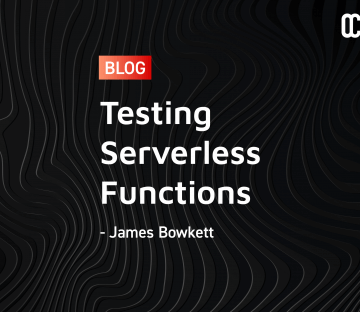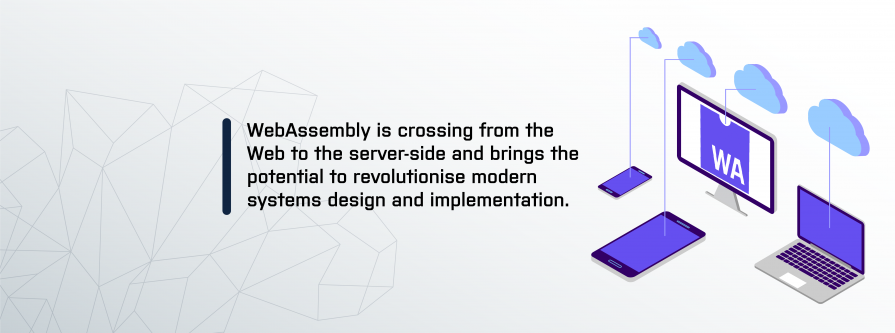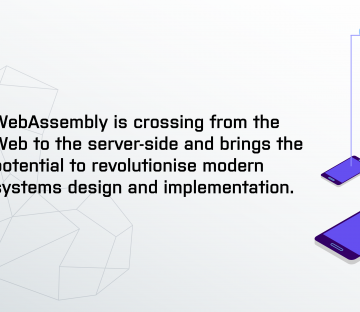20 items found: Search results for "lambda" in all categories x


August 19, 2015 | Software Consultancy
Memoization is a technique whereby we trade memory for execution speed. Suppose you have a function which
In this scenario, it may make sense to “remember” the output returned for each distinct input in a hash map, and replace function execution with a lookup in the hash map.


February 11, 2022 | AWS, Cloud, GCP, Kubernetes, Microservices, Open Source, Software Consultancy
Serverless functions are easy to install and upload, but we can’t ignore the basics. This article looks at different strategies related to testing serverless functions.


December 11, 2020 | Cloud, Cloud Native, Kubernetes, Microservices
“WebAssembly is a safe, portable, low-level code format designed for efficient execution and compact representation.” – W3C
In this blog, I’ll cover the different applications of Wasm and WASI, some of the projects that are making headway, and the implications for modern architectures and distributed systems.


March 20, 2020
Traditionally, Usability and Security have been set in opposition to each other: with tight security, we end up with painful user experience. In this blog, Guy focuses on financial services as an exemplar of how we can introduce usability into a vertical with challenging security and compliance requirements.


February 14, 2018 | Cloud
AWS Announced a few new products for use with containers at RE:Invent 2017 and of particular interest to me was a new Elastic Container Service(ECS) Launch type, called Fargate
Prior to Fargate, when it came to creating a continuous delivery pipeline in AWS, the use of containers through ECS in its standard form, was the closest you could get to an always up, hands off, managed style of setup. Traditionally ECS has allowed you to create a configured pool of “worker” instances, with it then acting as a scheduler, provisioning containers on those instances.


February 6, 2018 | Cloud
Among the many announcements made at Re:Invent 2017 was the release of AWS Privatelink for Customer and Partner services. We believe that the opportunity signalled by this modest announcement may have an impact far broader than first impressions suggest.


August 8, 2017 | Cassandra
Recently, the sad news has emerged that Basho, which developed the Riak distributed database, has gone into receivership. This would appear to present a problem for those who have adopted the commercial version of the Riak database (Riak KV) supported by Basho.
This blog is written exclusively by the OpenCredo team. We do not accept external contributions.


July 11, 2017 | Cloud, Cloud Native
Over the years, OpenCredo’s projects have become increasingly tied to the public cloud. Our skills in delivering cloud infrastructure and cloud native applications have deepened and the range of cloud projects we are able to take on has grown. From enterprise cloud brokers to cloud platform migration in restricted compliance environments, our ability to deliver on the cloud is now a core component of our value proposition.


March 7, 2017 | Data Analysis, GCP
Google has recently made its internal Spanner database available to the wider public, as a hosted solution on Google Cloud. This is a distributed relational/transactional database used inside for various Google projects (including F1, the advertising backend), promising high throughput, low latency and 99.999% availability. As such it is an interesting alternative to many open source or other hosted solutions. This whitepaper gives a good theoretical introduction into Spanner.


January 24, 2017 | Cloud
This blog aims to provide an end to end example of how you can automatically request, generate and install a free HTTPS/TLS/SSL certificate from Let’s Encrypt using Terraform. Let’s Encrypt is a free, automated, and open certificate authority (CA) aiming to make it super easy (and free – did I say free!) for people to obtain HTTPS (SSL/TLS) certificates for their websites and infrastructure. Under the hood, Let’s Encrypt implements and leverages an emerging protocol called ACME to make all this magic happen, and it is this ACME protocol that powers the Terraform provider we will be using. For more information on how Let’s Encrypt and the ACME protocol actually work, please see how Let’s Encrypt works.


October 13, 2016 | Data Analysis
In Lisp, you don’t just write your program down toward the language, you also build the language up toward your program. As you’re writing a program you may think “I wish Lisp had such-and-such an operator.” So you go and write it. Afterward you realize that using the new operator would simplify the design of another part of the program, and so on. Language and program evolve together…In the end your program will look as if the language had been designed for it. And when language and program fit one another well, you end up with code which is clear, small, and efficient – Paul Graham, Programming Bottom-Up


June 24, 2016 | Software Consultancy
Akka has been designed with a Java API from the very first version. Though widely adopted, as a Java developer I think Akka has been mainly a Scala thing… until recently. Things are changing and Akka is moving to a proper Java 8 support.


April 29, 2016 | Software Consultancy
In this post, I’ll demonstrate an alternative API which uses some of the advanced language features of the new Kotlin language from Jetbrains. As Kotlin is a JVM-based language, it interoperates seamlessly with Concursus’s Java 8 classes; however, it also offers powerful ways to extend their functionality.


March 3, 2016 | Software Consultancy
JetBrains (the people behind IntelliJ IDEA) have recently announced the first RC for version 1.0 of Kotlin, a new programming language for the JVM. I say ‘new’, but Kotlin has been in the making for a few years now, and has been used by JetBrains to develop several of their products, including Intellij IDEA. The company open-sourced Kotlin in 2011, and have worked with the community since then to make the language what it is today.




August 18, 2015 | Software Consultancy
In this post, the last in the New Tricks With Dynamic Proxies series (see part 1 and part 2), I’m going to look at using dynamic proxies to create bean-like value objects to represent records. The basic idea here is to have some untyped storage for a collection of property values, such as an array of Objects, and a typed wrapper around that storage which provides a convenient and type-safe access mechanism. A dynamic proxy is used to convert calls on getter and setter methods in the wrapper interface into calls which read and write values in the store.


August 5, 2015 | Data Analysis, Data Engineering
A few weeks ago, we thought about building a Google analytics dashboard to give us easy access to certain elements of our Google Analytics web traffic. We saw some custom dashboards for bloggers, but nothing quite right for our goal, since we wanted the data on a big screen for everyone in the office to view.


July 14, 2015 | Software Consultancy
Building simple proxies
In the previous post I introduced Java dynamic proxies, and sketched out a way they could be used in testing to simplify the generation of custom Hamcrest matchers. In this post, I’m going to dive into some techniques for implementing proxies in Java 8. We’ll start with a simple case, and build up towards something more complex and full-featured.


July 13, 2015 | Software Consultancy
Why Use Dynamic Proxies?
Dynamic proxies have been a feature of Java since version 1.3. They were widely used in J2EE for remoting. Given an abstract interface, and a concrete implementation of that interface, a call to some method on the interface can be made “remote” (i.e. cross-JVM) by creating two additional classes. The first, a “marshalling” implementation of the interface, captures the details of the call in the source JVM and serializes them over the network. The second, an “unmarshalling” endpoint, receives the serialized call details and dispatches the call to an instance of the concrete class on the target JVM.


January 30, 2015 | Software Consultancy
When I first started programming in Scala a few years ago, Traits was the language feature I was most excited about. Indeed, Traits give you the ability to compose and share behaviour in a clean and reusable way. In Java, we tend deal with the same concerns by grouping crosscutting behaviour in abstract base classes that are subsequently extended every time we need to access shared behaviour in part or in total.